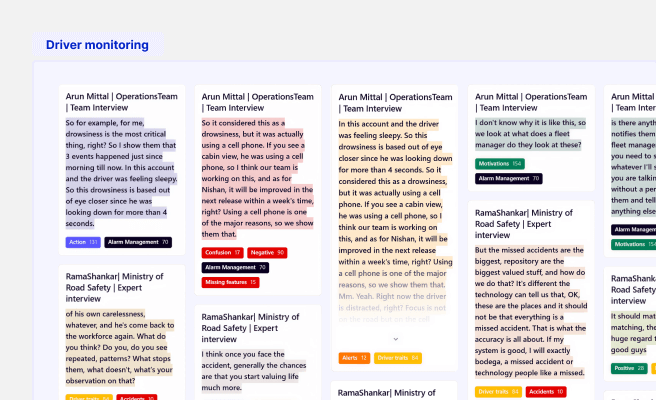Time To Market
<p>Time to market (TTM) refers to the period it takes from a product being conceived until its being available for sale. For companies in the climate tech sector, reducing TTM is crucial as it allows them to quickly address urgent environmental challenges and capitalize on market opportunities. An efficient TTM strategy can make the difference between pioneering a market niche and playing catch-up.</p>
<p>Historically, time to market has been a critical factor in the success of technology-driven products. In the competitive landscape of climate tech, the ability to swiftly develop and deploy innovative solutions can significantly impact a company's credibility and market standing. With the rapid pace of technological advancements, organizations must be adept at not only creating groundbreaking products but also delivering them to consumers swiftly.</p>
<h2 id="2">Components of Time to Market</h2>
<p>Several key components influence TTM, including:</p>
<ul>
<li><strong>Product Development:</strong> The phase where the initial concept is transformed into a tangible product.</li>
<li><strong>Testing and Validation:</strong> Ensuring the product meets all necessary standards and performs as intended.</li>
<li><strong>Manufacturing:</strong> The process of producing the final product at scale.</li>
<li><strong>Marketing and Distribution:</strong> Strategies to promote the product and make it available to the target market.</li>
</ul>
<p>By optimizing each of these components, companies can significantly reduce their TTM and gain a competitive edge.</p>
<h3 id="3">Benefits of Reducing Time to Market</h3>
<p>Reducing TTM offers several benefits:</p>
<ul>
<li><strong>Competitive Advantage:</strong> Being first to market with a new product can establish a company as a market leader.</li>
<li><strong>Increased Revenue:</strong> Faster product launches can lead to quicker revenue generation.</li>
<li><strong>Market Responsiveness:</strong> Companies can swiftly adapt to market demands and trends, ensuring their products remain relevant.</li>
</ul>
<p>For example, in the climate tech industry, a company that quickly develops a new carbon capture technology can attract significant investments and partnerships, positioning itself as a leader in sustainable solutions.</p>
<h3 id="4">Challenges in Achieving a Short TTM</h3>
<p>While the benefits of reducing TTM are clear, several challenges may arise:</p>
<ul>
<li><strong>Resource Constraints:</strong> Limited resources can hinder the development process.</li>
<li><strong>Quality Assurance:</strong> Ensuring high-quality products within a short time frame can be challenging.</li>
<li><strong>Coordination:</strong> Efficiently coordinating between different teams and departments is essential.</li>
</ul>
<p>Overcoming these challenges requires a strategic approach, leveraging tools and methodologies that enhance efficiency and collaboration.</p>
<h3 id="5">Strategies to Reduce Time to Market</h3>
<p>Several strategies can help organizations reduce their TTM:</p>
<ul>
<li><strong>Agile Development:</strong> Implementing agile methodologies can streamline the development process, allowing for faster iterations and adjustments. Learn more about <a href="https://www.atlassian.com/agile" style="color: #2896FF; text-decoration: underline;">Agile Development</a>.</li>
<li><strong>Cross-Functional Teams:</strong> Encouraging collaboration between different departments can enhance coordination and speed up the development process. Explore more on <a href="https://www.sciencedirect.com/science/article/abs/pii/S0263786313001369" style="color: #2896FF; text-decoration: underline;">Cross-Functional Collaboration</a>.</li>
<li><strong>Technology Integration:</strong> Leveraging advanced tools and technologies can automate various aspects of product development and testing. For instance, integrating AI-driven testing tools can accelerate the validation phase.</li>
</ul>
<p>By adopting these strategies, companies can effectively reduce their TTM and improve their competitive standing.</p>
<h2 id="6">Case Study: Swift Deployment of Climate Tech Solutions</h2>
<p>An illustrative example of effective TTM is the rapid deployment of solar technology by <a href="https://www.tesla.com/solarpanels" style="color: #2896FF; text-decoration: underline;">Tesla</a>. By leveraging agile development and cross-functional teams, Tesla was able to reduce the time from concept to market for their solar panels, allowing them to quickly meet the growing demand for renewable energy solutions. This swift deployment not only provided a competitive edge but also significantly contributed to global sustainability efforts.</p>
<h2 id="7">Conclusion</h2>
<p>Time to market is a crucial factor in the success of technology-driven products, especially in the climate tech sector. By optimizing the product development process, leveraging agile methodologies, and fostering cross-functional collaboration, companies can reduce their TTM, gain a competitive edge, and swiftly address urgent environmental challenges. Learn more about improving your <a href="https://hbr.org/1993/03/time-to-market" style="color: #2896FF; text-decoration: underline;">time to market strategies</a>.</p> <p>To understand the power of design across industries and sectors, view our diverse portfolio of works. <a href="https://www.whatifdesign.co/work" style="color:#2896FF; text-decoration:underline;">View our portfolio</a>.</p> <p>Increase user engagement that converts your demos into sales. Optimise your UX strategies with our audits.
<p>Fill out the <a href="https://tally.so/r/n97pxQ" style="color:#2896FF; text-decoration:underline;">UX Audit form</a> to get started. Ready to discuss your needs? <a href="https://cal.com/akhilak/what-if-design?duration=25" style="color:#2896FF; text-decoration:underline;">Book a consultation call</a> with us today.</p></p>

Let's scale your impact with great design.
Free consultation, no sales pitch
Thank you! Your submission has been received!
Oops! Something went wrong while submitting the form.
Let’s talk
Nothing great is built alone.
Let’s connect about your vision, our work and how we can collaborate.
Get in touch

